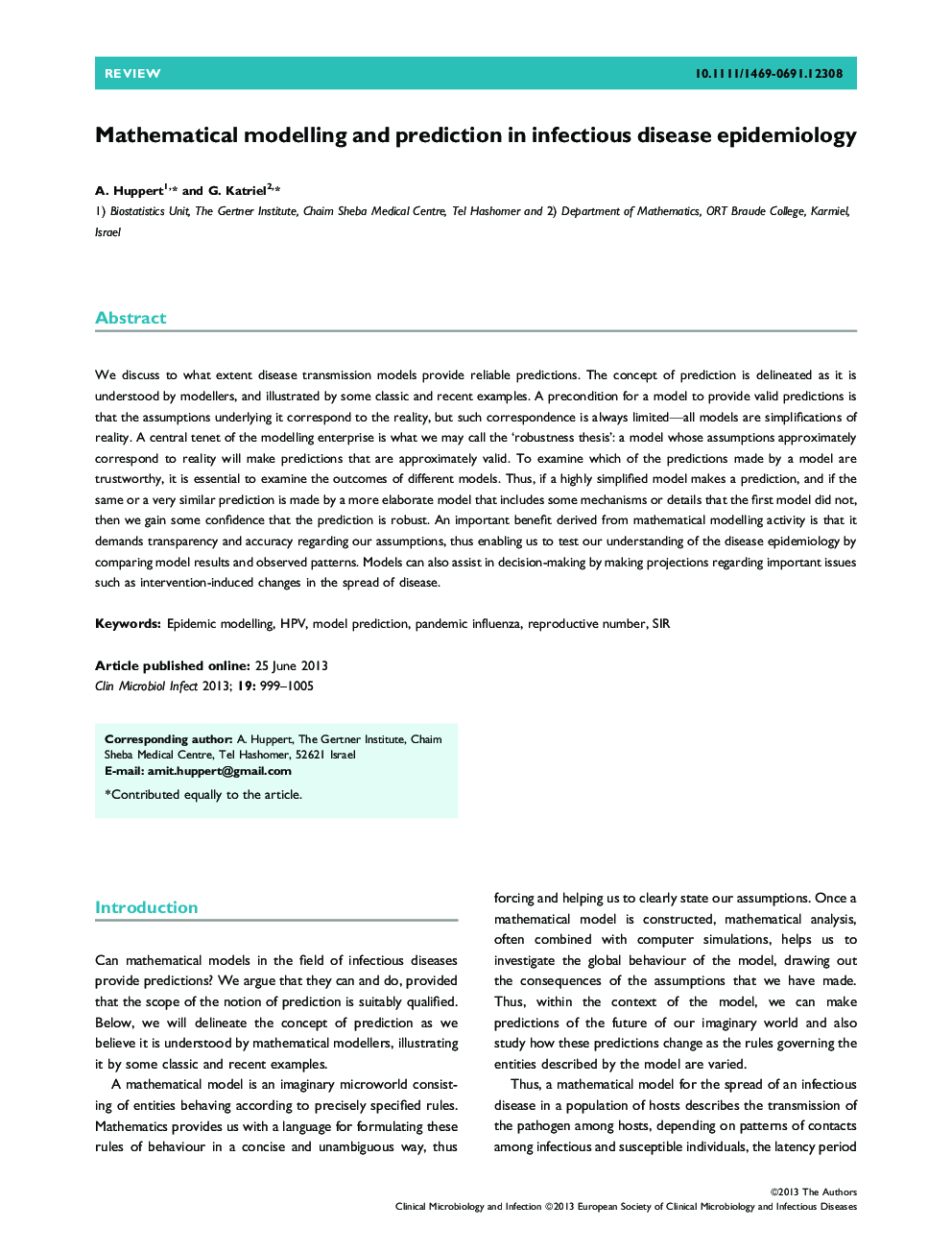| کد مقاله | کد نشریه | سال انتشار | مقاله انگلیسی | نسخه تمام متن |
|---|---|---|---|---|
| 3396640 | 1222181 | 2013 | 7 صفحه PDF | دانلود رایگان |

We discuss to what extent disease transmission models provide reliable predictions. The concept of prediction is delineated as it is understood by modellers, and illustrated by some classic and recent examples. A precondition for a model to provide valid predictions is that the assumptions underlying it correspond to the reality, but such correspondence is always limited—all models are simplifications of reality. A central tenet of the modelling enterprise is what we may call the ‘robustness thesis': a model whose assumptions approximately correspond to reality will make predictions that are approximately valid. To examine which of the predictions made by a model are trustworthy, it is essential to examine the outcomes of different models. Thus, if a highly simplified model makes a prediction, and if the same or a very similar prediction is made by a more elaborate model that includes some mechanisms or details that the first model did not, then we gain some confidence that the prediction is robust. An important benefit derived from mathematical modelling activity is that it demands transparency and accuracy regarding our assumptions, thus enabling us to test our understanding of the disease epidemiology by comparing model results and observed patterns. Models can also assist in decision-making by making projections regarding important issues such as intervention-induced changes in the spread of disease.
Journal: Clinical Microbiology and Infection - Volume 19, Issue 11, November 2013, Pages 999–1005